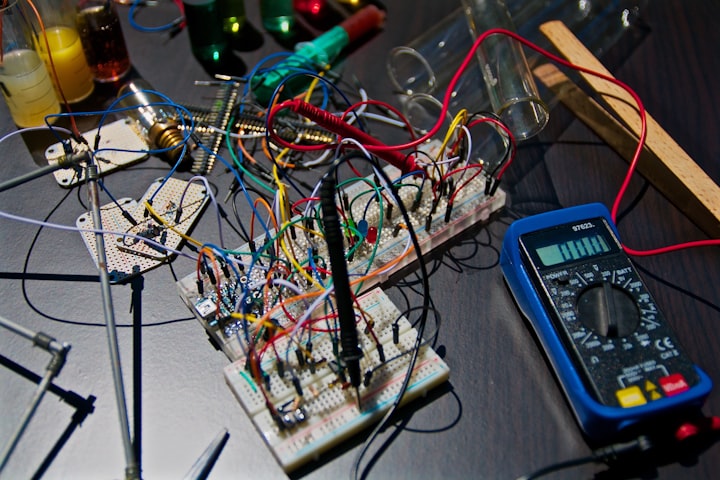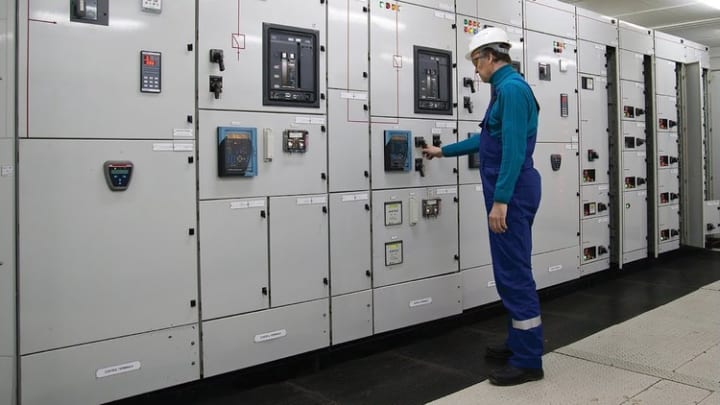What is IEC 61850?
Assume that there are manufacturing plants spread all over the country, having their own device brands communicating in a broad protocol spectrum. Also, assume that for the effective and efficient functioning of these manufacturing plants, there arises a need for communication among these plants


Assume that there are manufacturing plants spread all over the country, having their own device brands communicating in a broad protocol spectrum. Also, assume that for the effective and efficient functioning of these manufacturing plants, there arises a need for communication among these plants. But the devices are not supposed to communicate among each other. Now imagine substations in place of manufacturing plants. If so, you'll get an idea of power distribution and transmission across the world.
Substations should communicate with each other to sustain power reliability and quality. More protocols demand more engineering work.
Moreover, with both micro-grids and renewable energy
bringing in a diverse set of protocols and manufacturers
which is able to interfere with the stability of grid-supplied electricity and the enhanced stress on renewable energy in the group of different primary energy sources of countries globally, an urgent demand for a common protocol emerged.
This resulted in IEC61850, which is an international standard defining protocol that facilitates communication and interoperability between IEDs in substations. This is absolutely necessary to develop a smart grid and VHPs.
Other benefits of IEC61850 are-
IEC61850 is built on Ethernet communication foundation. Therefore, when compared to Serial communications, communication speed and bandwidth is very quicker and larger. More data that require quicker responses than before are transferred, and Ethernet backhauls become necessary with more sophisticated intelligent electronic devices.
It is an object-oriented protocol. The protocols that existed before IEC 60870-5-104 are signal oriented. In your control system, for such types of protocols, from device 1,2,3 respectively, you have to make reference to the data points as 21015, 10004. It denotes that you need to spend a lot of time to know what the data points stand for against the data repository you have. For the small scale systems, this is not problematic, but it will be when there are numerous data points. Identification of data points is easy for IEC61850.
With standard abbreviations and standardised nomenclature structure established, we observe that for as much as one is versed in the naming rules, it will be intuitive in understanding what the aim is. This results in an extreme drop in engineering cost since less time is used to pinpoint the relevant points. Moreover, most devices are self-describing. Therefore there is no need to inscribe the points independently, by a control software engineer. Alternatively, the control software will identify data points in the Intelligent Electronic Devices automatically.
Redundancy- When compared to Ethernet redundancy methods such as rapid spanning tree protocol, the IEC61850 redundancy provides for zero recovery time. IEC 61850 utilises Parallel Redundancy Protocol, under which over two separate routes, every source transfers two copies of a frame. Therefore if one path fails, downtime is fended off, where the data would still arrive at the terminus through another route. Thereafter, the parallel redundancy protocol has been revised, placing it with the redundancy protocol that uses a ring network, different from the PRP earlier version that runs in the parallel network. Therefore both HSR and PRP are identical with each other these days.
Manufacturing Message Specification, Generic Object Oriented Substation Event, Sampled Measured Values enables for quick and reliable data communication from:
Intelligent Electronic Devices to central station
Among Intelligent Electronic Devices and in Sampled Measured Values
From Potential Transformer to Current Transformer to the Intelligent Electronic Devices.
Features
Some of the features of IEC 61850 are-
Reporting Schemes- There are different reporting schemes to report data from the server by means of a server-client relationship that can be triggered on the basis of pre-set trigger conditions.
Data Modeling- Control & protection functionality, in addition to primary process objects in the substation, is modelled into various standard logical nodes that can be categorised under various logical devices.
There are logical nodes for functions/data associated with the
the physical device (LPHD) and logical device (LLN0).
Setting Groups- The setting groups are handled by SGCB so that according to the necessity a user can change to any active group.
Fast transfer of events- For a peer-to-peer communication mode, GSE is defined for the quick transfer of event data. This is subdivided into Generic Object Oriented Substation Event & Generic Substation State Events.
Commands- IEC 61850 also supports different command types that consist of select before operate and direct commands with improved and standard security.
Sampled Data Transfer- The transmission of sampled values making use of Sampled Value Control blocks are handled by schemes.
Data Storage- Substation Configuration Language is defined for the comprehensive storage of substation's configured data in a particular format.
Basically, the IEC 61850 standard is used only for electrical substations automation. But these days, various groups within IEC are operating to define an information model to automate numerous other energy system spheres as:
Electric vehicle
Hydroelectric power plants
Wind power plants
Distributed energy
About the Creator
Ryan Yash
Consultant at Webandcrafts





Comments
There are no comments for this story
Be the first to respond and start the conversation.